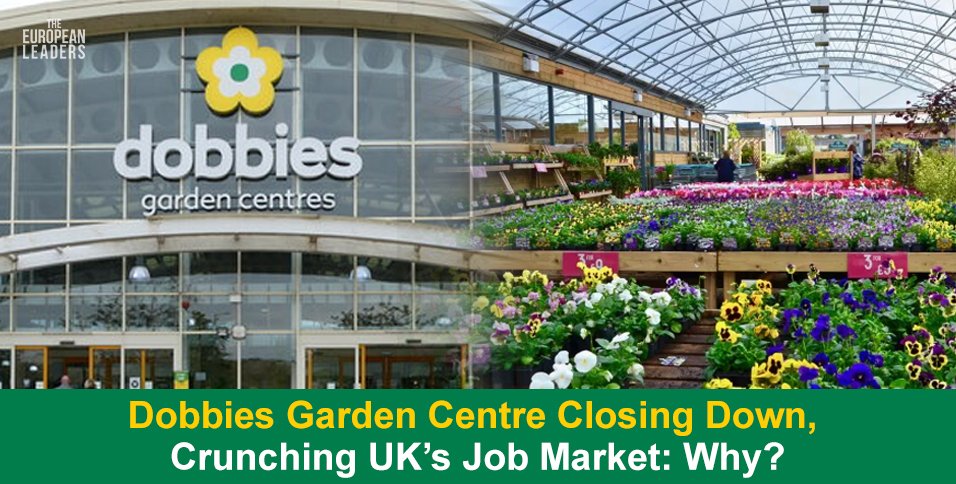The European Leaders
11 December 2024
London – In a move that has shocked customers and employees alike, Dobbies Garden Centre Closing Down is becoming an unfortunate reality for many locations across the UK. The closures are part of a larger financial restructuring plan aimed at keeping the company afloat amidst mounting losses.
But why is one of the UK’s largest garden centre chains making this drastic move, and what does it mean for the economy, employees, and the future of the gardening retail sector?
Overview: What’s Happening?
Dobbies Garden Centres announced the closure of 12 stores, affecting 465 employees out of its 3,600-strong workforce. The decision follows the Court of Session’s approval of a restructuring plan designed to reduce operational costs, tackle high rent expenses, and pave the way for future investments.
Stores Closing Down Include:
- Altrincham (December 17)
- Gloucester (December 15)
- Gosforth (December 19)
- Harlestone Heath (December 17)
- Huntingdon (Date TBD)
- Inverness (December 23)
- King’s Lynn (December 15)
- Pennine (December 15)
- Reading (December 23)
- Stratford-upon-Avon (December 23)
Additionally, sites in Morpeth and Stapleton will transition to other garden centre operators, while negotiations saved the flagship Antrim store from closure.
Why Are These Closures Happening?
The closures stem from a combination of challenges that many retail businesses are currently facing:
- Financial Losses: Dobbies reported a pre-tax loss of £130 million in 2023, a steep decline from the £21.3 million loss the previous year.
- High Rent Costs: Many store locations are burdened by historically high rental fees, making them financially unsustainable.
- Economic Pressures: Rising inflation, the cost-of-living crisis, and unpredictable weather patterns have negatively impacted sales and customer spending.
Impact on the UK Job Market
With 465 jobs at risk, the closures add pressure to an already strained UK job market. Retail workers face uncertainty, and local economies where these stores operate may see reduced economic activity. The closures will not only affect direct employees but also suppliers, logistics partners, and concessions like Waitrose that operate within some of these locations.
Future Plans for Dobbies
Despite these setbacks, Dobbies aims to bounce back through:
- Cost Reductions: Closing underperforming stores to streamline operations.
- Sustainable Profitability: Focusing resources on more profitable locations.
- Supplier Assurance: Maintaining strong partnerships with suppliers to ensure business continuity.
- Customer Focus: Improving the shopping experience and product offerings in remaining stores.
What Does This Mean for the Gardening Retail Industry?
Dobbies’ decision to close 17 locations, including six “Little Dobbies” stores, marks a significant shift in the gardening retail landscape. Competitors like Blue Diamond and Webbs Garden Centres may seize the opportunity to expand into regions where Dobbies is retreating.
For customers, fewer locations mean reduced access to Dobbies’ products and services, potentially driving them toward alternative retailers or online gardening platforms. This shift could reshape shopping habits in the sector.
Conclusion: A Tough Path Ahead
The Dobbies Garden Centre Closing Down news underscores the harsh realities of retail in today’s economy. While the closures aim to stabilise the company’s financial health, they come with high costs for employees and the broader job market. As Dobbies works to recover, the future of garden retail may hinge on innovation, cost efficiency, and customer loyalty.
For now, the green thumbs of Britain face a period of adjustment, with hopes that Dobbies will bloom again in a stronger, more sustainable form.








